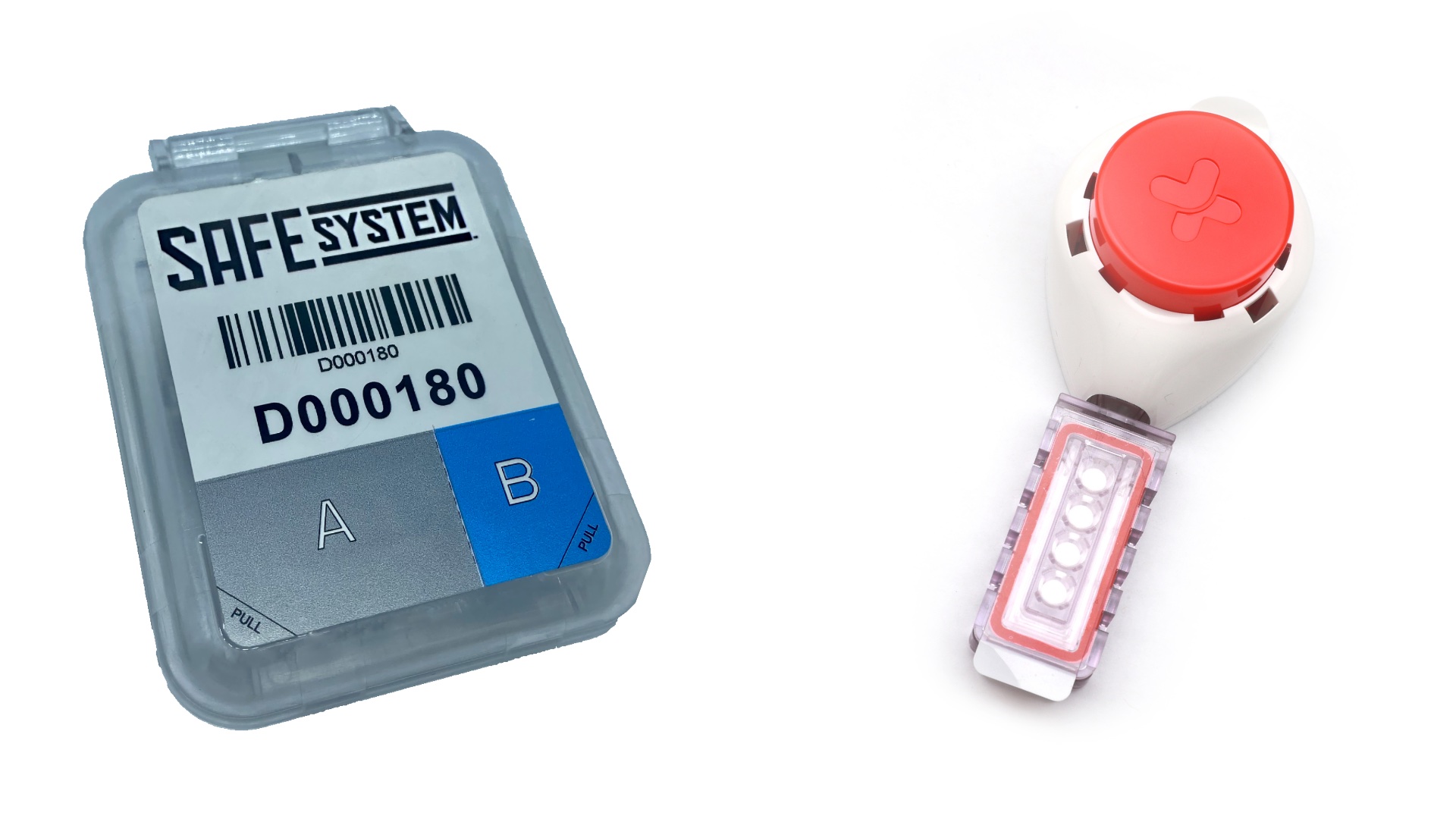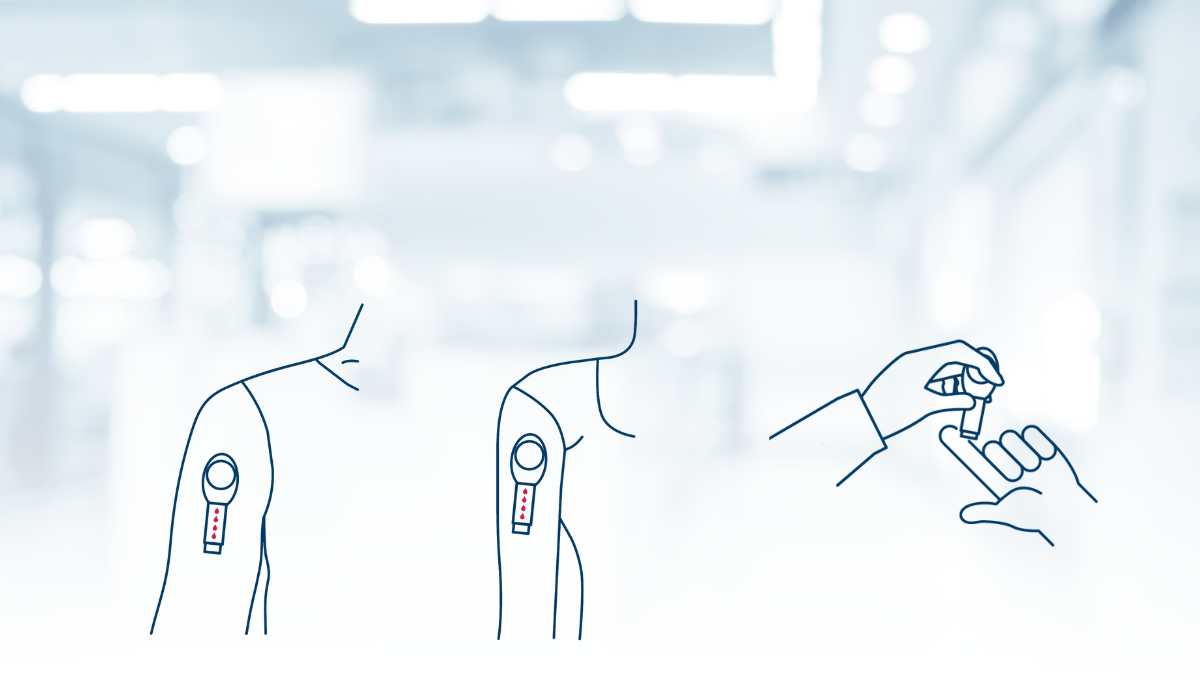Dried Blood Spot Testing
What you need to know
Athletes can be tested any time, any place as part of UKAD's intelligence-led risk-based testing programme. During their career, athletes may be subject to a urine test, venous blood test and/or a dried blood spot (DBS) test.
DBS testing involves taking a few drops of blood typically from an athlete’s upper arm or fingertip. A small device pricks the skin and absorbs the droplets of blood from a capillary (a small blood vessel). Like urine and venous blood tests, the DBS sample is then securely sent to a World Anti-Doping Agency (WADA) accredited laboratory and analysed to detect prohibited substances or methods.
Here are some frequently asked questions on DBS testing.

There are several benefits to DBS testing:
- Quick sample collection process
- Less invasive than urine or venous blood sample collection offering a more comfortable athlete experience
- Test requires only a very small volume of blood
There are also potential benefits to anti-doping organisations through reduced costs of sample collection and transport.
DBS testing should be considered as a complementary tool in the fight for clean sport. Urine and venous blood testing shall remain the fundamental components of our testing programme.
Yes, DBS testing was confirmed by WADA as being compliant with the World Anti-Doping Code on 1 September 2021. The processes surrounding DBS sample collection, transport, analysis, and storage are set out within the WADA Technical Document for Dried Blood Spot Testing and the WADA International Standard for Testing and Investigations.
UKAD’s Doping Control Personnel will explain the process of collecting a DBS sample and shall answer questions from athletes or support personnel during the Doping Control process. Athletes have the same rights and responsibilities as a urine and venous blood sample collection.
You should always undertake the test. Refusing a test could lead to a four-year ban.
A traditional blood sample collection is taken from the vein and it requires more blood from the athlete. A venous blood test takes 3-5 mL of blood from a vein in the arm which is then sent to the laboratory using temperature-controlled shipping. In comparison, DBS takes a much smaller amount of blood (a few drops) from a capillary and does not require temperature-controlled shipping to a WADA accredited anti-doping laboratory.
UKAD currently uses the Tasso M20 device, alongside the purpose-built Innovero SafeSystem DBS kit to make sure DBS samples are transported and stored securely.
Athletes should also be aware that there are a number of other approved DBS sample collection and transportation equipment used by other anti-doping organisations around the world.

The following steps are involved in collecting a DBS sample from an athlete:
-
The athlete selects a Tasso M20 device
-
The Doping Control Officer (DCO) asks the athlete to expose the upper arm (or alternative site). They’ll clean the test site with an alcohol wipe and wait for it to dry
-
The DCO places the Tasso device against the athlete’s skin. It has adhesive backing, so will stick to the arm
-
The DCO or athlete holds the device in place as they press the red button. This activates the microneedle, which will prick the skin and immediately retract back into the device. The Tasso device remains on the arm due to the adhesive backing
-
A tiny amount of blood is be drawn into the device and down onto the four dots of absorbent material. It can take up to five minutes for all dots to turn red
-
Once the collection is complete, the DCO removes the device from the athlete’s arm and places a plaster on the sample site.
The following steps are involved in securing a DBS sample:
-
The athlete selects a security kit
-
The DCO uses the security kit to remove the sample collection unit from the top of the device. They place it into the security kit and the athlete will close the lid
-
Closing the lid pushes the spots to the bottom of the kit, separating them into A and B samples
-
The athlete will inspect the security kit to confirm the sample is sealed
-
The DCO places the security kit into the foil bag for transportation to the lab. The bag contains silica gel to absorb any remaining moisture.
There may be some slight soreness at first, but as the procedure only punctures the skin it can be compared to a small pin prick.
The risk of infection is minimal and a trained DCO will use sterilised equipment to collect the sample.
Learn about the testing process
Here are useful links on UKAD’s testing process:

